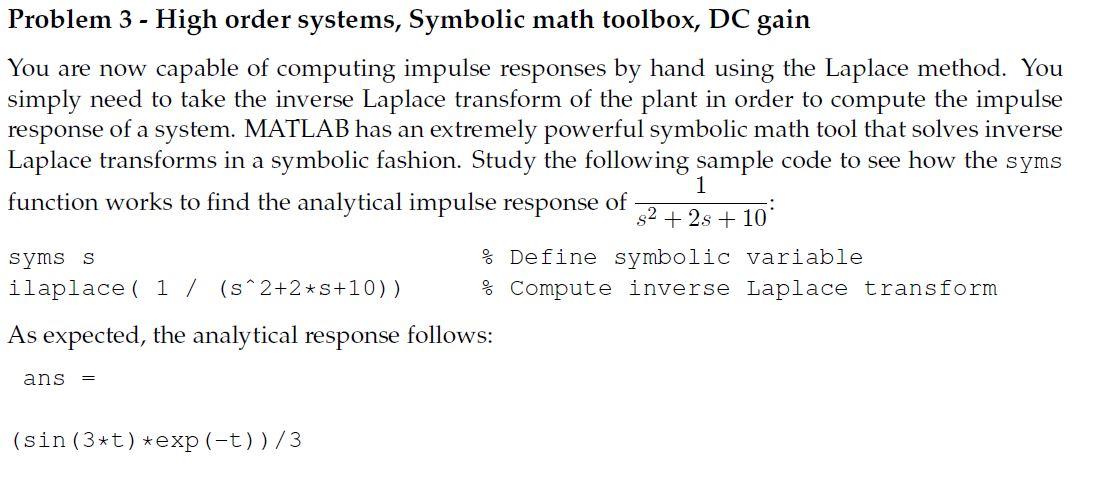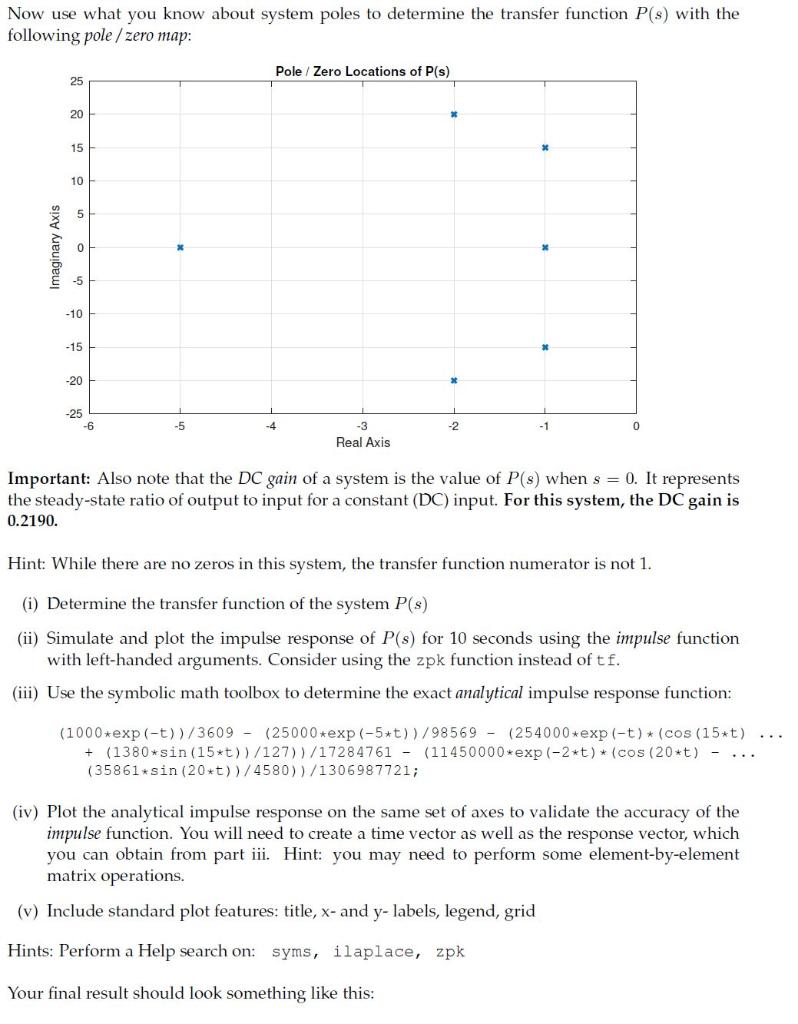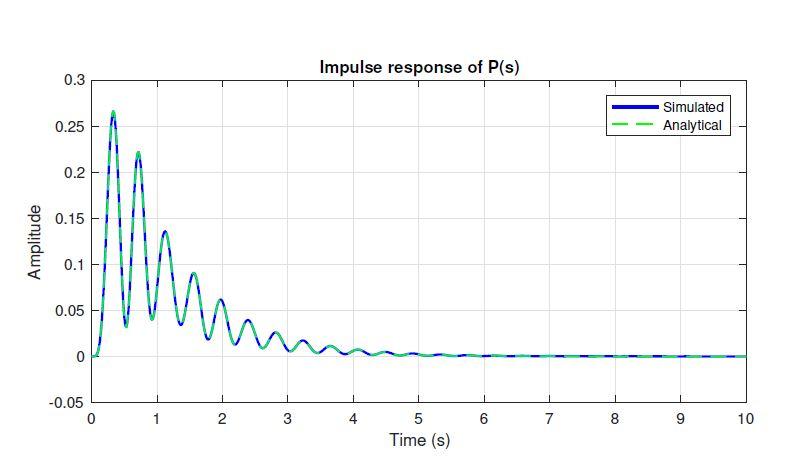


Problem 3 - High order systems, Symbolic math toolbox, DC gain You are now capable of computing impulse responses by hand using the Laplace method. You simply need to take the inverse Laplace transform of the plant in order to compute the impulse response of a system. MATLAB has an extremely powerful symbolic math tool that solves inverse Laplace transforms in a symbolic fashion. Study the following sample code to see how the syms 1 function works to find the analytical impulse response of 52 +2s + 10 syms S % Define symbolic variable ilaplace( 1 / (s^2+2+S+10)) % Compute inverse Laplace transform As expected, the analytical response follows: ans (sin (3*t) *exp(-t))/3 Now use what you know about system poles to determine the transfer function P(s) with the following pole / zero map: Pole / Zero Locations of P(s) 25 20 15 10 5 Imaginary Axis 0 -5 -10 -15 -20 -25 -5 -4 -2 -1 0 -3 Real Axis Important: Also note that the DC gain of a system is the value of P(s) when s = 0. It represents the steady-state ratio of output to input for a constant (DC) input. For this system, the DC gain is 0.2190. Hint: While there are no zeros in this system, the transfer function numerator is not 1. (i) Determine the transfer function of the system P(s) (ii) Simulate and plot the impulse response of P(s) for 10 seconds using the impulse function with left-handed arguments. Consider using the zpk function instead of tf. (iii) Use the symbolic math toolbox to determine the exact analytical impulse response function: (1000*exp(-t))/3609 - (25000 *exp(-5*t))/98569 - (254000 *exp(-t)+(cos(15*t) + (1380*sin (15*t))/127))/17284761 - (11450000*exp(-2*t)* (cos (20*t) (35861*sin (20+t))/4580))/1306987721; (iv) Plot the analytical impulse response on the same set of axes to validate the accuracy of the impulse function. You will need to create a time vector as well as the response vector, which you can obtain from part iii. Hint: you may need to perform some element-by-element matrix operations. (v) Include standard plot features: title, x- and y-labels, legend, grid Hints: Perform a Help search on: syms, ilaplace, zpk Your final result should look something like this: Impulse response of P(s) 0.3 Simulated Analytical 0.25 0.2 0.15 Amplitude 0.1 0.05 um 0 -0.05 0 2 3 3 4 LO 6 7 8 9 10 5 Time (s)









